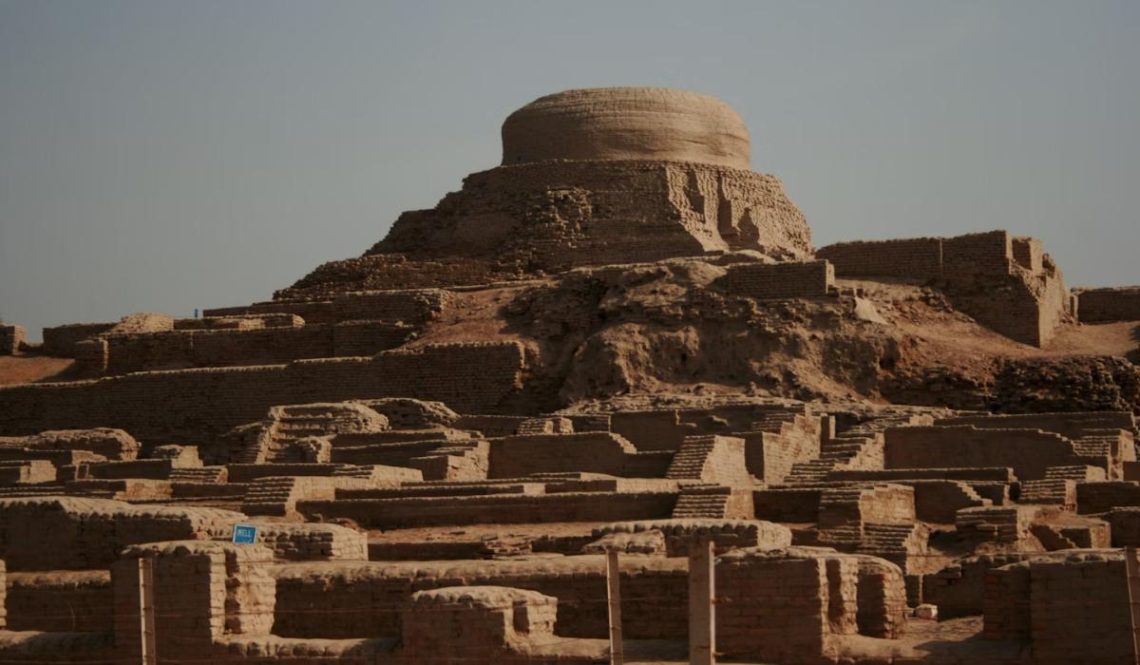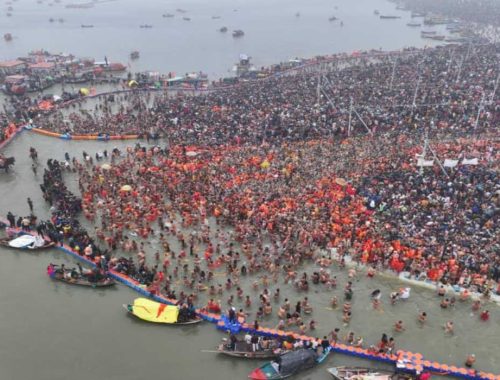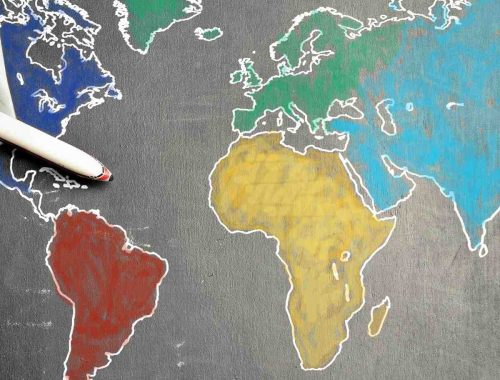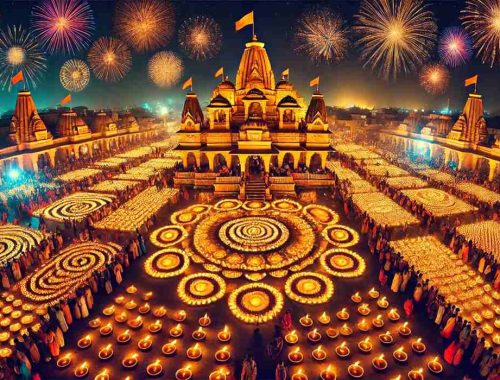
Exploring Indus Valley Civilization: History, Discoveries, and Scholarly Debates
The Indus Valley Civilization, also known as the Harappan Civilization, is one of the world’s earliest urban cultures. It flourished around 2500 BCE in Pakistan and northwest India. Its speciality lies in its advanced urban planning, impressive architectural achievements, and sophisticated social organization. Unlike other ancient civilizations, such as Mesopotamia and Egypt, the Indus Valley Civilization remained largely unknown until the early 20th century. This discovery reshaped our understanding of the ancient world, revealing a society that was supremely advanced for its time.
This blog focuses on exploring the historiography of the Indus Valley Civilization, examining the scholarly interpretations and debates. We will start with a historical background, outlining the civilization’s origins, geographical extent, and timeline. Then, we will discuss the early scholarly work that brought the Indus Valley Civilization to light. Keep reading!
Indus Valley Civilization: Origins and Discovery
The discovery of the Indus Valley Civilization stands as an interesting chapter in the world of archaeology. It was in the early 1920s when a team of British and Indian archaeologists unearthed the remains of an ancient urban culture in the Punjab region. It is now part of modern-day Pakistan. This civilization, previously unknown to history, came to light when excavation teams led by Sir John Marshall began digging at a site called Harappa in 1921. Not long after, in 1922, R.D. Banerji uncovered another major site at Mohenjo-Daro, further confirming this ancient civilization’s existence.
Harappa and Mohenjo-Daro are now recognized as the principal cities of the Indus Valley Civilization. Harappa, situated in the Punjab province, revealed a sophisticated urban settlement with advanced drainage systems, granaries, and residential buildings. Mohenjo-Daro, located in the Sindh province, displayed even more remarkable urban planning. It had well-laid-out streets, elaborate drainage system, and the impressive Great Bath suggests a high level of social organization and public health awareness.
Geographical Extent
The Indus Valley Civilization was confined to more than just these two cities. It spanned a vast area covering parts of modern-day India and Pakistan, making it one of the most prominent ancient civilizations in terms of geographic reach. The civilization extended from northeast Afghanistan to northwest India, surrounding an area of approximately 1.25 million square kilometers. This extensive region included major sites like Lothal and Dholavira in Gujarat, Rakhigarhi in Haryana, and Kalibangan in Rajasthan.
This geographical spread indicates a well-connected network of cities and towns, with evidence of trade and cultural exchange throughout the region. The presence of standardized weights and measures, uniform urban planning, and architectural styles, suggests a high degree of administrative control and societal cohesion.
Indus Valley Civilization: Timeline
The timeline of the Indus Valley Civilization is divided into several phases, each marking significant developments in its growth and eventual decline:
- Early Harappan Phase (3300-2600 BCE): This period marks the initial stages of urbanization, with the establishment of small, village-like settlements. Evidence from this phase shows the beginning of trade networks and agricultural practices that would later support larger urban centers.
- Mature Harappan Phase (2600-1900 BCE): The civilization peaked during this period, characterized by the development of major urban centers like Harappa and Mohenjo-Daro. This phase is notable for its advanced architecture, drainage systems, and extensive trade networks extending from Mesopotamia.
- Late Harappan Phase (1900-1300 BCE): This period witnessed the gradual decline of civilization. Scholars still debate the reasons for this decline, with theories ranging from climate change and river course shifts to invasions and internal societal changes. The cities began deteriorating, and the urban population gradually dispersed into smaller rural communities.
Also Read: The Vedic Age: Key Insights into Ancient Indian History (1500–500 BCE)
Cultural and Societal Contributions of the Indus Valley Civilization
Urban Planning
IVC is renowned for its advanced urban planning, which is evident in the organized layouts of its cities like Harappa and Mohenjo-Daro. These cities were built on a grid system featuring wide streets intersecting at right angles. This demonstrates an early form of urban zoning.
A standout feature of their urban planning was the sophisticated drainage system. Houses were connected to a centralized drainage system that carried waste away from the city through covered drains along the streets. This system included brick-lined channels and manholes for maintenance, reflecting a high public health and sanitation awareness level.
The architecture of the Indus cities included well-built houses made of standardized baked bricks. These houses often had courtyards, flat roofs, and multiple rooms, showing the civilization’s emphasis on private and communal living spaces. Public buildings like granaries and baths, such as the Great Bath of Mohenjo-Daro, indicate a complex society that valued community and religious activities.
Economy and Trade
The economy of the Harappan Civilization was diverse and strong, primarily based on agriculture and supplemented by trade. The fertile plains of the Indus River helpedthe cultivation of wheat, barley, peas, and cotton. The domestication of animals like cattle, buffalo, and sheep further bolstered their agricultural economy.
Trade played a crucial role in the civilization’s economy, with evidence of extensive trade networks that connected the Indus Valley to Mesopotamia, Oman, and the Persian Gulf. The discovery of seals and standardized weights and measures suggests a regulated trade system. Goods such as beads, pottery, and cotton textiles were traded, indicating a thriving craft industry.
Artifacts like carnelian beads and lapis lazuli found in the Indus Valley cities point to long-distance trade with regions as far as Afghanistan and Iran. These trade relations not only facilitated economic prosperity but also cultural exchanges, enriching the civilization’s development.
Art and Craftsmanship
The artistry of the Indus Valley Civilization is evident in the numerous artifacts, seals, and pottery discovered at various archaeological sites. The seals, often made of steatite, are engraved with intricate designs depicting animals, creatures, and possibly written script, showcasing their skills in carving and symbolism.
Pottery from the Indus Valley is equally impressive, featuring both utilitarian and decorative pieces. It was typically wheel-thrown and decorated with geometric patterns, animal motifs, and sometimes even human figures painted in black on red clay. These designs indicate a technical proficiency in ceramic production.
Furthermore, small figurines made of terracotta, bronze, and stone, such as the famous “Dancing Girl” of Mohenjo-Daro, highlight the civilization’s expertise in sculpting and metalworking. These artifacts reflect not only the people’s daily lives and beliefs but also their artistic and technological advancements.
Indus Valley Civilization: Early Scholarly Work
Initial Discoveries
The discovery of the Indus Valley Civilization began in the early 20th century. This is when John Marshall, the Director-General of the Archaeological Survey of India, spearheaded excavations that revealed the ancient cities of Harappa and Mohenjo-Daro. In 1921, Daya Ram Sahni excavated Harappa’s remains in present-day Pakistan under Marshall’s guidance. The following year, R. D. Banerji discovered the ruins of Mohenjo-Daro, further solidifying the presence of a previously unknown civilization.
Marshall’s findings were groundbreaking. They revealed a highly developed urban culture with advanced architecture, drainage systems, and social organization. His work marked the beginning of a new era in South Asian archaeology and expanded our understanding of early urbanization.
Key Publications
John Marshall’s seminal publication, “Mohenjo-Daro and the Indus Civilization,” was published in 1931. It was one of the first comprehensive reports on the excavations. This three-volume work provided detailed descriptions of the archaeological findings, including city layouts, artifacts, and insights into the regular lives of the inhabitants. Marshall’s detailed documentation set a high standard for future archaeological research and offered a wealth of information that scholars continue to reference today.
Another key publication was Mortimer Wheeler’s “The Indus Civilization,” first published in 1953. Wheeler, who succeeded Marshall as the Director-General of the Archaeological Survey of India, brought a more scientific approach to the study of the Indus Valley. His work emphasized the systematic excavation techniques and provided a revised chronology of the civilization. Wheeler’s contributions helped refine the timeline and cultural context of the Indus Valley Civilization, making his publication a cornerstone of Indus Valley studies.
In the mid-20th century, the work of Stuart Piggott also played a crucial role in expanding the understanding of the Indus Valley Civilization. His book, “Prehistoric India to 1000 B.C.,” published in 1950, offered a broader historical perspective by placing the Indus Valley. This was within the larger framework of South Asian prehistory. Piggott’s interdisciplinary approach helped bridge the gap between archaeology and history, providing a more holistic view of the civilization’s development and significance.
Debates and Controversies
Origins and Development
The origins of the Indus Valley Civilization have been the subject of much scholarly debate. One theory suggests that the civilization developed independently within the region. It was driven by the fertile land of the Indus River basin and the subsequent agricultural surplus it generated. According to Gregory Possehl, a leading scholar in the field, the civilization emerged from the earlier Neolithic communities in the area, evolving gradually over centuries.
In contrast, some scholars argue that the Indus Valley Civilization was influenced by or even originated from external cultures. This theory is supported by evidence of trade and cultural exchanges between the Indus Valley and Mesopotamia, as noted by Shereen Ratnagar, who highlights similarities in material culture and urban planning between these ancient societies.
Decline
The decline of the IVC is another area with various hypotheses. One of the earliest theories, proposed by Mortimer Wheeler, attributes the decline to invasions by Indo-Aryan tribes. Wheeler’s interpretation was based on the discovery of skeletal remains that he believed were victims of massacres.
However, this invasion theory has mainly been disputed by recent scholars. Many now suggest that environmental factors played a crucial role in the decline of civilization. Studies by climatologists have indicated that changes in river patterns are likely due to tectonic activity. It could have led to severe flooding or, conversely, the drying up of the river systems that supported the civilization. Additionally, some researchers, like David R. Wright, propose that prolonged droughts and deforestation for agricultural expansion might have degraded the environment, making it unsustainable for large urban centers.
Script and Language
The Indus script remains one of the most enigmatic aspects of the civilization, with its decipherment still eluding scholars. There are around 400 distinct symbols, often found on seals and pottery. However, no bilingual texts have been found to provide a Rosetta Stone-like breakthrough.
One significant debate revolves around whether the script represents a full-fledged writing system or a collection of proto-writing symbols. Asko Parpola, a prominent researcher in this field, argues that the script encodes a Dravidian language, drawing parallels with the later Brahmi script and linguistic patterns observed in South Indian languages.
In contrast, other scholars, such as Steve Farmer, propose that the symbols might not represent a language at all. However, it could be religious or administrative symbols with no direct linguistic content. This ongoing debate illustrates the complexities and challenges of interpreting the script without additional context or more extensive evidence.
Archaeological and Technological Advances in Understanding the Indus Valley Civilization
Recent Discoveries
Recent archaeological discoveries have significantly deepened our understanding of the Indus Valley Civilization. One of the most notable finds is the site of Rakhigarhi in Haryana, India. It has revealed one of the largest settlements of the Indus Valley Civilization. Excavations at Rakhigarhi have unearthed artifacts like pottery, beads, and tools that suggest a highly advanced society with advanced skills in craftsmanship and trade.
Another significant discovery is the uncovering of a massive water management system at Dholavira in Gujarat, India. This system includes large reservoirs and intricate drainage channels, indicating that the Indus Valley people had developed advanced techniques for water conservation and management. Such findings challenge the earlier perception of the civilization being primarily agrarian and highlight their engineering capabilities.
In addition, the excavation of the site at Bhirrana in Haryana has pushed back the dating of the Indus Valley Civilization. Artifacts and radiocarbon dating suggest that Bhirrana could be one of the earliest settlements, dating back to around 7570-6200 BCE, which provides new insights into the origins and timeline of the civilization.
Technological Advances
Modern technology has been crucial in enhancing our understanding of the Indus Valley Civilization. Satellite imagery, for instance, has been instrumental in identifying and mapping ancient settlements. High-resolution satellite images have allowed archaeologists to locate buried structures and plan excavation sites more accurately. This technology has revealed the extensive urban planning and layout of cities like Harappa and Mohenjo-Daro, showing a level of advancement previously underappreciated .
Advanced dating techniques, such as Accelerator Mass Spectrometry (AMS) radiocarbon dating, have provided more precise dates for various sites and artifacts. This has helped to create a more accurate timeline of the civilization’s development and decline. For example, AMS dating at the site of Kalibangan has confirmed the existence of an early Harappan phase, contributing to a better understanding of the chronological sequence of the Indus Valley Civilization.
Additionally, Geographic Information Systems (GIS) have enabled researchers to analyze spatial data and understand the distribution of settlements in relation to natural resources and trade routes. This has provided insights into the economic and social organization of the civilization, showing how they adapted to their environment and interacted with neighboring cultures.
Incorporating these technological advances has revolutionized the field of archaeology and significantly enhanced our knowledge of the Indus Valley Civilization. These tools have confirmed many earlier hypotheses and opened new avenues of research, ensuring that our understanding of this ancient civilization continues to grow and evolve.
Conclusion
Throughout this blog, we have covered the rich history of the Indus Valley Civilization, one of the world’s earliest urban cultures. We have explored the civilization’s origins, starting with its discovery by archaeologists like John Marshall in the early 20th century. We have examined the contributions of significant scholars over the decades. Early pioneers like Mortimer Wheeler, who helped shape our understanding of civilization’s decline. Whereas, contemporary experts like Gregory Possehl, have shed light on the economic and social aspects of civilization. We also discussed debates and controversies, such as the undeciphered script and the reasons for the civilization’s decline.
While much has been uncovered about the Indus Valley Civilization, many areas remain ripe for future research. Deciphering the Indus script remains one of the most significant challenges, and breakthroughs in this area. It could release a deeper understanding of their culture and administration. Additionally, more archaeological work in lesser-explored sites could provide further insights into regional variations within the civilization and its interactions with neighboring cultures.
The Indus Valley Civilization holds a lot of knowledge that is yet to be explored. By continuing to study this ancient culture, we learn about the past and gain insights that could inform our present and future. We encourage readers to look deeper into the fascinating history of the Indus Valley Civilization. Whether you are a student, history enthusiast, or professional, there is always more to discover about this remarkable civilization.
FAQs
What is the Indus Valley Civilization?
The Indus Valley Civilisation was one of the most ancient civilizations. It flourished around 2500 BCE to 1900 BCE in the northwestern regions of South Asia. It is well-known for its advanced urban planning, architecture, and social organization.
Where was the Indus Valley Civilization located?
The Indus Valley Civilization was primarily located in what is now Pakistan and northwest India. Key archaeological sites include Harappa and Mohenjo-Daro in Pakistan and Lothal and Dholavira in India.
Who discovered the Indus Valley Civilization?
Sir John Marshall, who led the initial excavations at Harappa and Mohenjo-Daro, first discovered the ruins of the IVC in the 1920s.
What were the major cities of the Indus Valley Civilization?
The major cities of the IVC included Harappa, Mohenjo-Daro, Lothal, Dholavira, and Kalibangan. These cities are popular for their advanced urban planning, including well-laid-out streets, drainage systems, and brick-built houses.
How did the Indus Valley Civilization decline?
Scholars debate the decline of the Indus Valley Civilization. Theories include climatic changes, river course shifts, and invasions. We cannot abide by a single cause, and multiple factors likely contributed to the decline.
What kind of economy did the Indus Valley Civilization have?
The Indus Valley Civilization economy was diverse, including agriculture, craft production, and trade. They cultivated crops like wheat and barley, engaged in extensive trade with Mesopotamia, and produced goods such as pottery, beads, and textiles.
What were some technological advancements of the Indus Valley Civilization?
The Indus Valley Civilization exhibited technological advancements, including sophisticated urban planning, advanced drainage systems, standardized weights and measures, and metallurgy. Their cities featured grid layouts, and their craftsmanship in bead-making and ceramics was highly developed.
What areas require further research regarding the Indus Valley Civilization?
We need further research to decipher the Indus script, understand the reasons for civilization’s decline, and explore lesser-known archaeological sites. Advances in technology and interdisciplinary studies will continue to uncover new aspects of this ancient civilization.
Khushi Jha
I am Khushi Jha, a proud alumna of Delhi University with a degree in History and Political Science. My fascination with the events that have shaped our world drives me every day. Currently, I am pursuing my Master’s in History, diving even deeper into global dynamics and the incredible heritage of India. I firmly believe that India's rich heritage deserves wider recognition. I strive to bring its stories to the forefront, ensuring they are celebrated and acknowledged on a global stage. I have written extensively across various niches, including fashion, health, lifestyle, real estate, hospitality, amongst others. In my free time, you’ll find me immersed in books, both fiction and non-fiction, or simply enjoying some much-needed rest.
You May Also Like

Maha Shivratri Snan at Maha Kumbh Mela 2025: Everything You Need to Know
February 12, 2025
Destination Development: Key Strategies for Making India a Global Tourism Hub
September 7, 2024



One Comment
Pingback: